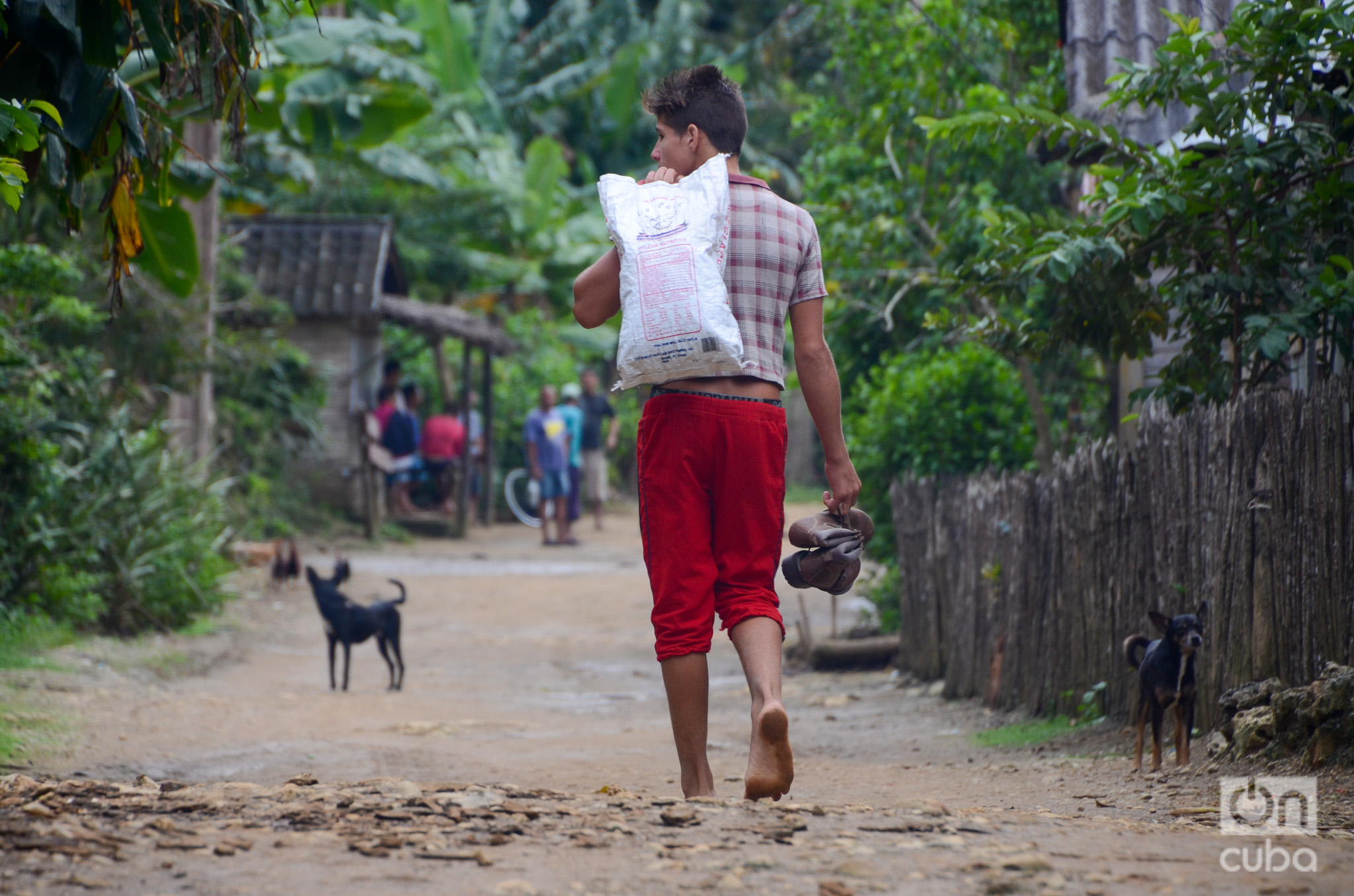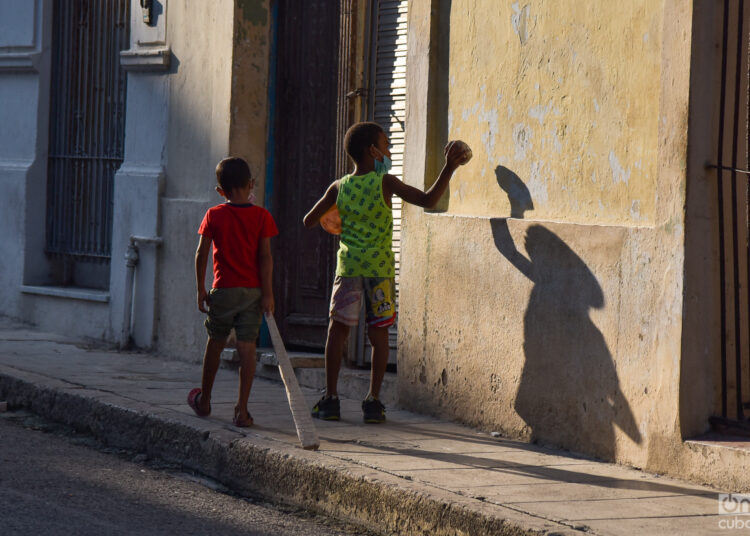Breaking the cycle of exclusion is an extremely complex process. Living on the streets is not a common circumstance in Cuba, where the typical profile of the “wanderer” is usually elderly males with varying degrees of alcohol dependence and mental illness, according to a feature article by Cubadebate published in February.
Although in recent years there has been an increase in the proportion of people in this condition who do not reach the age of 60, it is still common that older adults predominate (they represent 61% of the total).
The sources cited by Cubadebate detail that between 2014 and 2023, 3,690 people with “wandering behavior” were registered throughout the country, 75% of whom had been permanently gotten off the streets.
The article does not specify how many minors were part of the statistics, and what protocols are adopted in these cases. But in the second part of the series, published by Cubadebate on April 26, Deputy Attorney General of the Republic Alina Montesino implicitly recognized that this is a phenomenon that the authorities do not always deal with adequately.
“Regarding the care of minors in a situation of wandering…the provisions of the Family Code regarding the obligation to inform the Ministry of Education or the Ministry of Public Health to guarantee their reception in social assistance centers has not been taken into account,” she warned.
In the case of adults with “wandering behavior,” priority is given to their reintegration into their families; but it is an area that must be influenced first, recognized the director of Social Prevention of the Ministry of Labor and Social Security (MTSS), Belkis Delgado. “The first reason recognized in Cuba for a person to wander, whether or not they have an associated illness, is that the family has not cared for them correctly and that is the cause that we have to change.”
According to the latest MTSS statistics, 189,169 Cuban families fall into the “vulnerable” category, depending on State social assistance programs. Such aid ranges from food and household appliances to the payment of services such as electricity, home assistants, and money for transportation to attend medical appointments.
These social protection mechanisms do not have, however, the same scope as years ago, the sociologist Luis Emilio Aybar, director of Cuba’s Juan Marinello Institute for Cultural Research, emphasized in Cubadebate. During the pandemic and the subsequent crisis, there has been an “increase in market formulas, in privatization formulas,” said Aybar, while benefits that existed, indirect mechanisms to transfer resources to the most vulnerable groups, were eliminated, he explained.
“We are suffering the social cost of policies that have been adopted at times that were not the most ideal.” Groups such as single-parent families or those with many offspring have been among the most affected by this new reality.
In 2023, a specific budget item was once again allocated to caring for mothers with three or more children, who at the end of the year numbered 62,600; 573 of them received new houses. Having one’s own roof is the highest aspiration for many, above other material benefits or paid employment facilities.
Since at the beginning of his first term, President Miguel Díaz-Canel stated that mothers with numerous children should be privileged in the housing granting processes, protests by mothers in this condition, who went to government offices or social networks to ask for help, became common.
The cases usually resemble that of a resident in the Havana municipality of Cerro, named Irasema Pino, who last August stood with her four children in front of the local department of the National Institute of Territorial and Urban Planning (formerly Physical Planning) to demand she be given a house. “I can’t take it anymore. I ask the provincial government to help me with my children. I will not move from here until the government or Díaz-Canel comes,” she demanded on Facebook.
Other mothers raid unoccupied homes or disused state premises, although especially the latter often must later be repaired to provide them with habitable conditions. “They are women without husbands to whom the State has to help with everything: the house, the furniture, the household appliances, the daycare center and semi-boarding school for their children, a checkbook… And in most cases when their daughters reach adolescence, they begin to repeat the maternal pattern of getting pregnant early, having children without a stable partner, and depending on social protection. It is a problem that tends to worsen, and in which children suffer particularly harshly,” an MTSS official in the municipality of Camagüey told OnCuba on condition of anonymity.
Although there are no public statistics in this regard, there is evidence of cases of abandonment of children in these institutions because, given the vulnerability, impossibility, or lack of interest in taking charge, some mothers with numerous offspring and without family support may be forced to give — temporarily or permanently — the custody of their children to the State or incorporate them into boarding schools.
The economic crisis that the island is experiencing and the consequent deterioration of the social protection systems managed by the government contribute to this circumstance.

Not even a single helpless child
The transfer of minors to homes for children without family protection is considered an extreme decision, applicable only when every last alternative has been exhausted.
There are 54 centers of this type in Cuba, which in mid-2023 served just over 400 children and teenagers up to 18 years of age. The provinces with the highest number of facilities and registrations are Havana, Villa Clara and Holguín.
At the time of their creation, in 1984, the homes were limited to caring for orphaned or abandoned children, but, as the national director of Special Education in the Ministry of Education (MINED), Beatriz Roque, explained to the newspaper Granma, “the emergence of various social complexities has committed our State and government to providing care to a child and youth population that has certain social deficiencies. For example, today we also welcome children from families in extreme or critical social situations, who, due to their living conditions, cannot adequately care for and protect the children who live under their care and custody.”
According to the protocol established by that institution, “the reasons for considering a child fit to be placed in a home are [being] orphans, abandoned, [or having] parents who are incarcerated…psychiatric [or] alcoholics”; the last two cases, in particular, must have the endorsement of a medical commission.
Minors housed in the system of homes for children without family protection live full-time in these centers until they reach the age of majority, at 18. There they are cared for by educators and other specialists, and they live as normal a life as possible, going to schools corresponding to their age. Typically, in municipalities with a larger population, more than one of these “homes” operate, or preschool children are housed in an independent home, almost always attached to the daycare center they attend.

Decree Law 76 of 1984, which regulates aspects related to the subject, also establishes that upon reaching 18 years of age each young person who leaves the homes, will receive a free home awarded by the People’s Power of their locality, and accompanying services during the process of incorporation into work and social life.
In 2022, the head of the Special Education department in the Provincial Department of Education of Camagüey, Mabel Álvarez, explained to the Adelante newspaper that “minors have the right to a stipend according to their age to meet their personal needs. From 7 to 14 they receive 400 pesos and 720 between 14 and 18. Annually they are assigned an amount of 3,500 pesos for purchases in stores of the Cimex or Caribe chains. As this reporter learned, these amounts remain the same, but their probable increase would be under study.
To achieve more personalized attention, the average home registration rarely exceeds 15 children. The homes for children without family protection are located in spacious homes with good construction status; furthermore, in terms of food, they are usually sponsored by agricultural cooperatives and receive donations from state and private enterprises.
Sometimes this aid can be for life. A circumstance like this arose in February 2023 in Camagüey, when six young people who left the home system received their homes; four of them, with intellectual disabilities, had to be assigned home social workers, a monthly monetary benefit, and lunches and suppers through the Family Care System (SAF).
“We do not distance ourselves, we have the duty and obligation to continue caring for them, see what they need and help them with whatever they require for their integration into society,” said the head of the Special Education department in the province, Mabel Álvarez, on the occasion.
Decree Law 95 of 1986, which regulates the operation of the Prevention and Social Care Commissions, grants the MINED the leading role in these instances, to which its municipal and provincial directors are obliged to refer the cases of children who are in potential situations of abandonment or neglect.
“As appropriate, they will immediately arrange, after rigorous investigations, enrollment and entry into Mixed Children’s Daycare Centers or Homes for Minors without Filial Protection,” recalls an article published in 2019 by a group of professors from the University of Guantánamo.
The commissions are also made up of officials from the ministries of Labor and Social Security, Public Health and the Interior, and the Federation of Cuban Women (FMC), and are empowered to request emergency police interventions and guide the work of organizations such as the Civil Status Registry, the territorial departments of Social Workers and the courts.
The system must work like clockwork for the benefit of minors. However, its effectiveness is limited by the lack of specialized personnel.
“The homes of children without family protection always receive aid. For example, last year the children in these centers were given tablets, clothes, and other items, all new, that had been confiscated by customs. There are also agreements with agricultural cooperatives to help with food, and in recent times several new forms of management (MSMEs) have brought them donations of toys and candy, joining some state enterprises that traditionally did so. From what I know, in that case, the biggest problems with the program are those regarding the stability of the workforce (the educators usually have been there for many years and have a great sense of belonging, but sometimes there is a lack of service workers, due to low salaries) and with the compliance for the time for the children’s leaving the home (in theory, the young people have to stay in the homes until they are 18 when they receive their own houses. However, in Camagüey, some of these young people’s housing has been delayed, due to the housing deficit, and they have had to stay in the homes until they are 19 or 20),” a social worker from the city of Camagüey told OnCuba on condition of anonymity.
In September of last year, when celebrating the 23rd anniversary of the founding of the Social Workers Program by Fidel Castro, Minister of Labor and Social Security Marta Elena Feitó explained that the country has about 7,000 professionals in that specialty and the intention until 2025 is to increase their number, to multiply their presence at the level of People’s Councils.
Whatever increase is achieved, in all likelihood will be far from the figure of 28,000 social workers that Cuba had at the end of 2005, at the peak of the Program, when four regional schools were operating at full capacity.
Surveys carried out that year had revealed that 43,480 family units were in what was defined as “critical condition.” Although such a condition cannot be automatically equated to that of a “vulnerable family,” it does serve to give an idea of the complexity of the current context, in which a group four times smaller of social workers care for a much larger number of people in need.
There are no public statistics on the budget allocated to supporting homes for children without family protection.
The question is valid as to whether the authorities and society are prepared for a scenario of growing inequality, in which many families — particularly single-parent families — need help for actions as basic as eating daily. Those in homes for children “without protection” are in some ways already “saved,” but many others are not.










